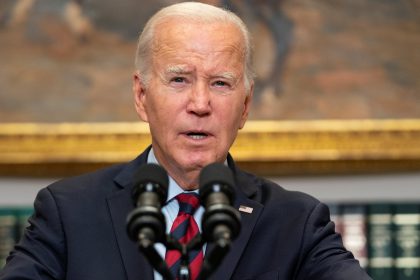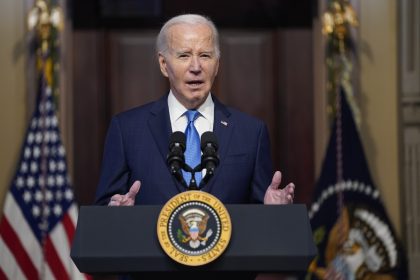Bank Economists Foresee Economic Soft Landing, But Concerns Linger

WASHINGTON — A panel of the nation’s top bank economists sees the U.S. economy continuing to expand through 2024, though at a slower pace than its long-term potential.
Perhaps of even greater interest to U.S. consumers at the moment, the latest forecast from the American Bankers Association’s Economic Advisory Committee, released Friday morning, shows a gradual easing of inflation toward the Federal Reserve’s objective of 2% over the next two years.
Its detailed forecast numbers can be found here.
The committee is made up of 13 chief economists from some of North America’s largest banks. It forecasts 1.6% inflation-adjusted growth this year, fourth quarter over fourth quarter, and 1.5% in 2023.
Which means while the economy, overall, will continue to move in a somewhat positive direction, it will be at a pace well below last year’s 5.5% growth rate.
“Earlier this year, the committee anticipated that containing COVID-19 would support continued above-trend growth,” said Richard DeKaser, committee chair and chief corporate economist at Wells Fargo & Co., in a written statement.
“That outlook deteriorated when supply chain issues reemerged due to Russia’s invasion of Ukraine and another pandemic wave in Asia, compounding persistently high inflation and prompting a more aggressive Federal Reserve response,” DeKaser said.
Despite these headwinds, the bank economists expect strong consumer spending to keep the overall economy moving forward. The committee foresees real consumer spending rising 2.5% this year and 1.8% next year, supported by low unemployment and exceptional wealth gains over the previous few years.
“Unemployment remains low and job gains are expected to continue,” DeKaser’s analysis continued. “Moreover, 2019, 2020 and 2021 were the highest three years on record for gains in inflation-adjusted wealth per household, which will provide a strong tailwind for the consumer economy.”
Outlook for Business Mixed
There are some promising signs in the committee’s forecast for businesses. For instance, the member economists believe business investment will rise 6.2% this year, and then bump up an additional 2.8% in 2023.
On the other hand, they also agree that inventory accumulation will continue to be slow.
“Labor shortages have constrained production, spurring firms to invest in technology to increase efficiency,” DeKaser said. “At the same time, profit margins are strong and supply chain conditions are expected to improve, which should mitigate inflation pressures somewhat.”
Despite support from the consumer and business sectors, two sectors — international trade and government — are expected to be a drag on the economy in the near term.
As one might expect, the nation’s major trade partners in Europe and Asia are beset by multiple problems, including the war in Ukraine, high energy prices and the stubborn lingering effects of COVID-19.
As a result, trade flows — and the economic activity they stimulate — are expected to stay slow for the foreseeable future.
At the same time, the committee expects government spending to weaken with the termination of pandemic-support programs.
Confidence in Fed’s Response to Inflation
The committee noted that after inflation and labor compensation surged during the first quarter, the Federal Reserve adopted a more aggressive posture for monetary tightening.
Following a 50 basis point increase in the federal funds rate target in early May, the group expects another 150 basis points this year followed by 50 basis points more early next year.
Quantitative tightening of the Fed’s balance sheet will further contribute to rising interest rates going forward. The committee believes market interest rates will respond accordingly, with rates on the 10-year Treasury note climbing to 3.2% and mortgage rates at 5.3% by year-end.
The committee also expects higher interest rates, along with the other drags on the economy, to stem excessive inflation. The group forecast is for consumer price inflation to recede steadily from near 8% in the first quarter to 6.3% in the fourth quarter, then 2.4% a year later.
“It looks like the Federal Reserve will successfully bring inflation down to more tolerable levels in the foreseeable future,” said DeKaser. “However, there are substantial risks to this outlook.”
According to the committee, the risks are biased to the downside and there is a 40% chance of recession next year. Overtightening by the Federal Reserve, stubbornly elevated inflation, little resolution to supply chain problems, or a housing correction could tip the economy into a downturn.
As to housing, all the bank economists believe that stretched affordability will drive a substantial deceleration in future house price appreciation. Nonetheless, due to the short supply of homes for sale, the group does not expect broad-based price declines.
Dan can be reached at [email protected] and at https://twitter.com/DanMcCue.
























